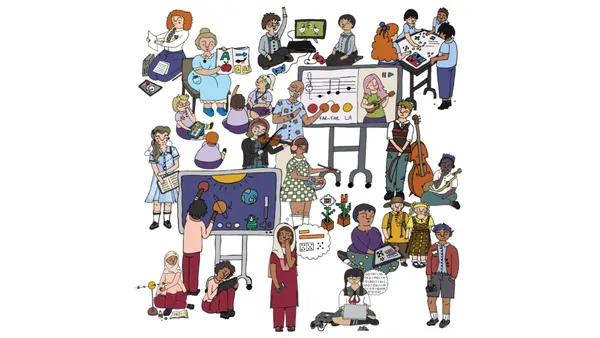Dive Brief:
- The harmful effects of teacher turnover — which also impact students whose teachers stay on staff — may be largely driven by educators who leave midyear, and this might happen more than previous research suggested, according to a group of studies appearing in the journal Education Finance and Policy.
- In North Carolina, about one-fourth of the state's total teacher turnover happened midyear. Teachers leaving during the year totaled 4.6% annually, but among educators in their first three years, the rate jumped to 6%, notes Chalkbeat. Often, this took place in middle and high schools, schools serving larger numbers of lower-income students or students of color, and among teachers who were less effective or eligible for retirement benefits. As a result, students saw lower math and English scores, as well as a drop in learning.
- The paper cites three potential causes of these results: classrooms getting disrupted by a teacher leaving, instability in schools that have teachers leaving during the year and replacements being less effective than their predecessors. However, it's important to note that these studies only measured midyear teacher attrition in one state, and it's unclear what the statistics are in other parts of the country, Chalkbeat reports.
Dive Insight:
Low teacher retention rates indisputably hurt students and schools across the country, and nationwide teacher shortages remains one of the top issues in education. This school year began with 100,000 classrooms where teachers were inadequately certified or inexperienced. Experts say the shortages are fueled in part by low salaries that haven't recovered from the recession, general school finance problems that place more monetary burdens on educators, a lack of attractiveness of the profession and the tendency for teachers to face disrespect or blame for the brunt of today's biggest education struggles. Other factors, like preparation through alternative routes, also make teachers much more likely to leave during the school year.
In schools nationwide, there is not only a struggle with retaining teachers generally, but also a retention gap between black and white teachers, tasking schools with filling classrooms with qualified teachers as well diversifying the workforce, which can benefit students of color.
There are also positive signs, however. The past year has led to positive changes in the perception of America's teachers, which could lead to upward trends in teacher recruitment and retention. There's more support for higher teacher pay, media coverage has become more sympathetic and education issues are reaching the forefront of the political stage as midterm elections approach.
With initiatives like loan forgiveness and service scholarships, teacher residencies and strong induction programs, states are trying to make headway in finding — and keeping — qualified, motivated and experienced teachers. There's still plenty of work to be done, but providing professional development opportunities and creating a positive work environment where teachers have a voice are also important steps that principals and administrators can take to improve retention.












